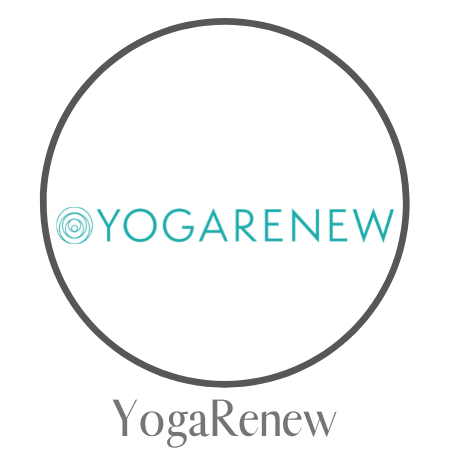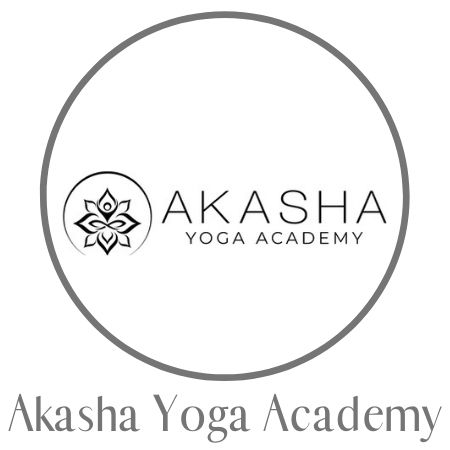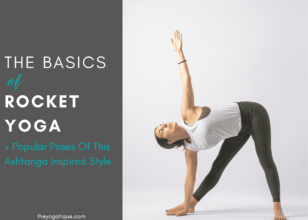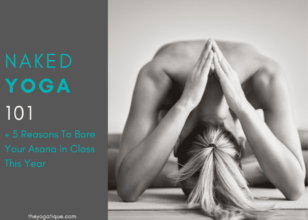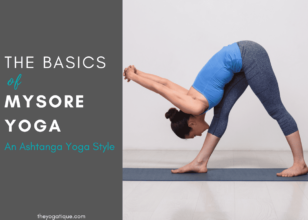If you've tried other styles of yoga and found them too physically demanding and fast-paced, you might just fall in love with restorative yoga's slow, nourishing style. Never heard of it before? No worries, as this guide will explain what Restorative yoga is, the benefits of it, and what to expect from the practice!
If you want to discover a more relaxing style of yoga, keep reading to learn more about Restorative yoga and the top poses for beginners. We’ll explore its benefits, some basic poses, and how it can balance out your yang practice.
Article content:
(Click any link below to jump directly to section)

IS YOGA TEACHER TRAINING ON YOUR RADAR?
Online Yoga Teacher Training Offers
- Affordability
- Flexibility
- Certification
- Lifetime access
⬇Click below to discover the best Yoga Alliance registered online yoga certification courses⬇
What is Restorative yoga?
Restorative yoga is a relaxing, meditative, passive style of yoga. It involves holding floor-based (seated and reclined) stretches for extended periods (several minutes) while using props for support.
You practice Restorative yoga passively, which means your muscles are not actively engaged while holding the poses. Practitioners are often in a meditative state of mind.
The long passive stretching and holds, meditative aspect, and use of props (yoga blocks, bolsters, blankets) promote deep relaxation and healing of the body and mind.
It is the opposite of Bikram and Iyengar, for example.
10 benefits of Restorative yoga
Restorative yoga can positively affect our health and well-being in many ways. The benefits can affect our physical and emotional health. Here are ten key benefits of Restorative yoga:
- Promotes emotional relaxation
- Can lower blood pressure
- Mood booster
- Reduces pain and tension
- Improves sleep and promotes deep rest
- Promotes deep breathing
- Immune booster
- May help with weight loss
- Suitable for everyone
- Can improve overall health
1. Promotes emotional relaxation
The most significant benefit of this style is its effectiveness in promoting relaxation. The classes encourage you to breathe slowly and deeply, which rebalances the nervous system by shifting the sympathetic nervous system (fight-or-flight mode) to the parasympathetic nervous system (relaxation response). This, in turn, relaxes the muscles and slows mental activity.
2. Can lower blood pressure
The calming of the autonomic nervous system also helps to lower high blood pressure, which has a direct result on stress levels. Many yogis report feeling instant stress relief from a Restorative yoga class, so it is great to do it in the evenings to unwind from a hectic day.
3. Mood booster
Its yoga's relaxation and stress-relief benefits have a ripple effect, boosting our mood. By reducing anxious thoughts and feelings of irritation, we naturally start to experience more positive thinking.
4. Reduces pain and tension
The long holds and passive style of stretching help you release tension in various body parts, such as the back and hips. Moreover, as restorative yoga allows your mind to relax fully, this yoga practice is also perfect for relieving headaches and mental tension.
5. Improves sleep and promotes deep rest
Restorative yoga is effective at improving sleep quality. It can help you fall asleep quicker and access deeper sleep states to feel more well-rested in the morning.
6. Promotes deep breathing
Mindful breathing is crucial in a Restorative yoga session. This breath awareness carries over into daily life, giving you the tools to stay calm and collected in stressful situations by connecting to your breath.
7. Immune booster
High stress levels compromise the immune system. By lowering stress levels, the immune system is strengthened.
8. May help you lose weight
Losing weight is one of the most surprising yet interesting benefits. A slow, passive style like this will not cause you to work up a sweat or raise your heart rate significantly. However, regular Restorative yoga practice helps us become more mindful of our dietary and lifestyle choices and learn to love ourselves, reducing the tendency to overeat.
9. Suitable for everyone
This practice is accessible to everybody, including pregnant women, those with current health issues, and those with past injuries.
10. Can improve overall health
It has been proven to effectively aid chronic health conditions, including cancer, osteoarthritis, and various autoimmune disorders. The gentle stretches combined with the deeply relaxed state the practice evokes can help practitioners manage chronic pain and flare-ups.
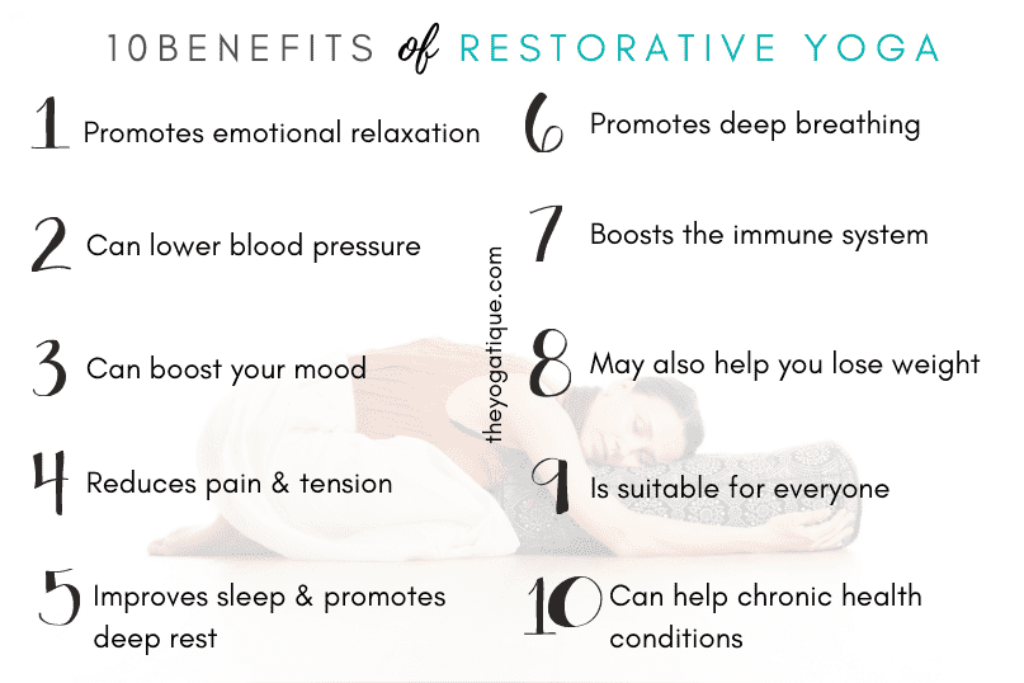
↓Great Yoga Alliance certified yoga teacher trainings you should look into↓
5 Restorative poses for beginners
As I mentioned before, Restorative postures are all floor-based. Therefore, you won't find Warrior 2, handstand, or arm balances in any restorative class. Instead, you will find supported versions of many gentle Hatha yoga poses. Here are five poses commonly performed in a Restorative yoga class:
- Supported child's pose
- Supported reclined butterfly
- Supported bridge pose
- Supported legs up the wall pose
- Supported savasana
1. Supported child's pose
Do you know how to make the child's pose even more nourishing? With the use of props. Here's how to do supported Child's pose:
- Widen your knees to hip distance and slide a yoga bolster between your thighs.
- Fold your torso over the bolster, resting your chest and belly on it.
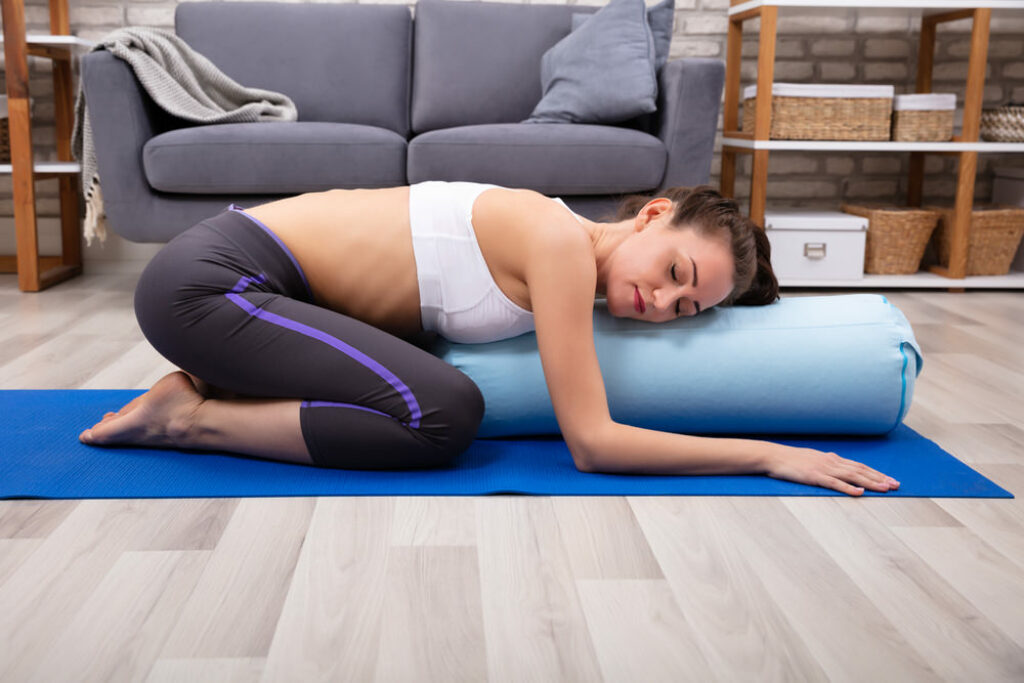
2. Supported reclined butterfly
This pose is good for hip opening and spinal alignment. Here's how to do supported reclined Butterfly:
- Place a bolster lengthways on your mat, then lay your back over it, allowing your head to drop down and rest on the ground.
- Bring the soles of the feet together, turn the knees out, and place a block under each knee for extra support.
- Open your arms and breath into your heart center. Add a strap in for even more support.
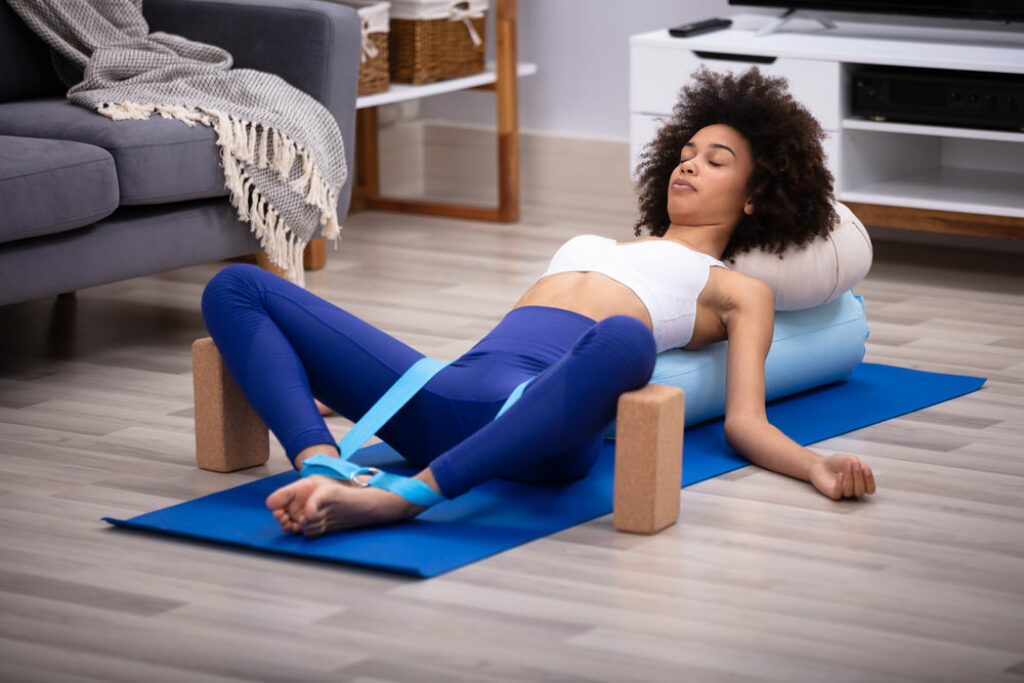
3. Supported bridge pose
Supported bridge pose is a great stretch for the chest and hip flexors. Here's how to do supported Bridge pose:
- From a reclined position, bend your knees and bring your feet close to your buttocks.
- Press into your feet to lift the hips high and slide a yoga block under your sacrum.
- Choose the level that feels best for you and ensure the prop supports the base of the spine, not the buttocks.
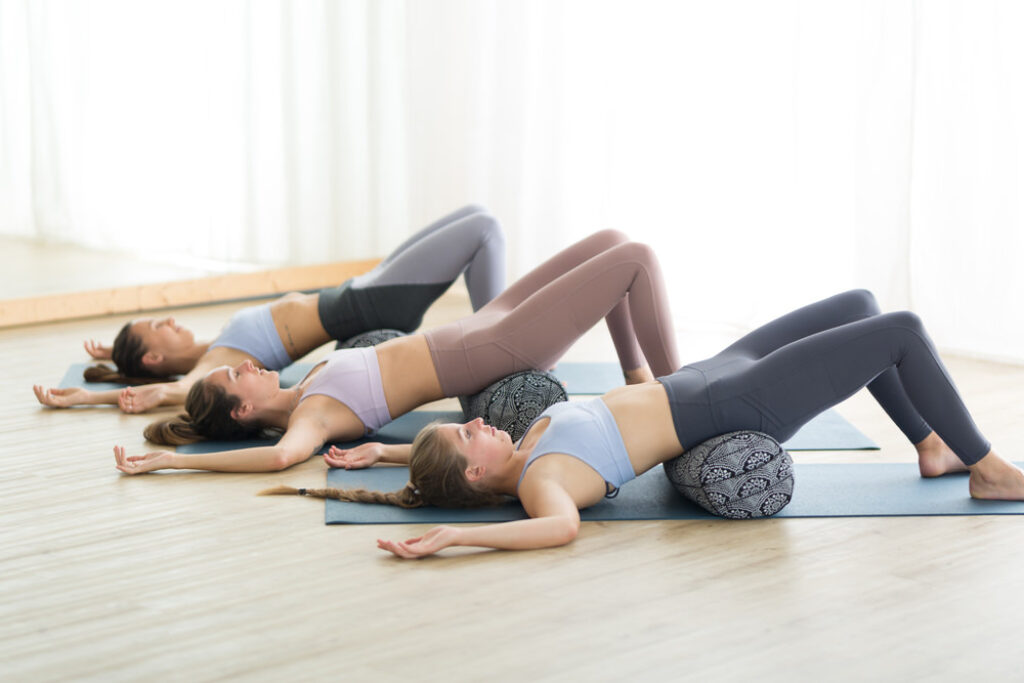
4. Supported legs up the wall pose
Supported legs up the wall pose promotes deep relaxation and improved circulation. Here's how to do supported legs up the wall pose:
- Find a wall and sit sideways next to it with your knees bent and feet flat on the floor.
- Lie back and swing your legs up onto the wall while lowering your upper body to the floor. Adjust your position so your hips are close to the wall.
- Place a folded blanket or bolster under your hips for support.
- Extend your arms out to the sides with palms facing up.

5. Supported savasana
Supported savasana gently releases tension in the muscles and joints and reduces stress by relaxing the parasympathetic nervous system. Here's how to do supported savasana:
- Place a bolster or rolled blanket lengthwise on your mat.
- Sit with your hips against the bolster and slowly lie back so your spine is supported. Adjust the bolster under your knees for added support.
- Use a small pillow or folded blanket under your head for comfort.
- Extend your arms out to the sides with palms facing up.

How often should you practice Restorative yoga?
So, considering all the great benefits of practicing Restorative poses, how often should we do them? Well, as the practice does not stress the muscles, you can practice it as often as you'd like.
Daily practice is ideal, but if your schedule does not permit that, aim for 2 to 3 times a week. I personally increase the frequency during times of stress, change, or uncertainty, basically whenever I have a stronger need to relieve stress.
Difference between Restorative yoga and Yin yoga
The main focus of Restorative yoga is to relax the body and promote healing through prop support. However, Yin yoga focuses on applying gentle stress to the body to stretch the deeper connective tissues. While both restorative and yin yoga involve long holds and similar asanas, they are not the same. Here are the key differences between Restorative and Yin:
- Restorative yoga: Focuses on relaxation and healing using props to fully support the body.
- Yin yoga: Focuses on stretching the body's connective tissue and ligaments.
Restorative yoga significantly differs from other styles like Anusara and Jivamukti yoga as well.
Takeaway
Along with having tons of benefits to your health and well-being, Restorative yoga is suitable and accessible for anyone. So why not try this rejuvenating yoga style and experience its wonders for yourself?!
FAQ about Restorative yoga
How is restorative yoga different from regular yoga?
Restorative yoga is different from other types of yoga because of its use of props to support the body and long holds with the aim of total relaxation.
Is restorative yoga good for beginners?
Restorative yoga is fantastic for beginners because it will introduce you to some common yoga poses in a modified and supported way.
Some online yoga studios, online yoga teacher training programs, and brands that we write about may offer us a small commission should you decide to make a purchase or signup after reading our content. Thank you for enabling us to exist!


